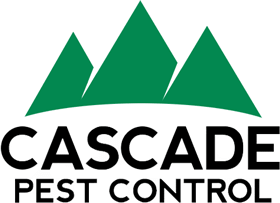Author: Kurt Treftz, Cascade Pest Control
Formica Obscuripes, or Thatching Ants, get their more common name from creating large mounds they build from various yard debris, such as small sticks, grass stems, leaves, pine needles, and/or whatever the common area vegetation allows. Similar to a ‘thatched roof’, the mounds are thought to collect solar radiation, providing warming during cooler periods, while the organic material may generally moderate temperatures and humidity levels within the nest.
Their mounds consist of thousands to millions of ants building, defending, exploring, and working for their colony. “Highways” of ants radiate from the nests as they search for more thatch material and food.
Thatching Ants in Washington State
Thatching ants in Washington state are typically larger than many ant species (about 4-8 mm in length), red and black in color, have a larger head (which is typically the red end of the ant) with powerful jaws.
More typically than not, you will notice the mounds before actually seeing the ants themselves… and if left unattended, the mounds can grow to be quite large depending on the age and health of the thatching ant colony. These mounds have tunnels and galleries extending into the soil below the mound. You may also see multiple mounds occupying open areas, decomposing trees, soil, or logs.
How to Prevent Thatching Ant Infestations
Preventing a Thatching ant infestation requires having a well-groomed front and back yard. Keep wood piles organized and be sure that rotting wood is not on the property. Since Thatching ants primarily reside outdoors, ensuring your yard is not an inviting place for one of their colonies is essential.
There are steps you can take to help prevent a thatching ant infestation. Here are a few tips:
- Maintain your yard’s landscaping by keeping a well-groomed front and back yard
- Avoid rotting wood piles anywhere on your property
- Remove dying, rotting trees
- Keep mulch away from being against your property foundation
- Trim trees and shrubs so they are not up against your property
Thatching ants are primarily an outdoor pest, so following these tips will ensure your yard is not an ‘invitation to the party’ for thatching ant colonies.
Are Thatching Ants Threatening or Dangerous?
From an ecological standpoint, thatching ants are beneficial to the ecosystem because their burrowing and nest construction helps soil aeration – which is benefits soil building, they catch and eat huge quantities of other insect pests – also scavenge and feed on the remains of larger dead animals – all of which benefits the animal and earth ecosystem.
However, thatching ant behavior is aggressive, and they can deliver a very painful bite with their powerful jaws. Their bite includes a spray of formic acid which can cause blistering to both you and your pets if not immediately treated.
In addition to being a nuisance to your yard landscape and picnic areas, thatching ants can injury and/or destroy seedling trees, plants, and buds of fruit trees.
Thatching Ant Control and Treatment
Treating thatching ant infestations is more effective with an experienced pest control professional. Cascade Pest Control technicians understand the best way to infiltrate the nests of thatching ants using the necessary safety precautions needed. Because thatching ants are aggressive and are known to attack, this ant control is best left to a professional pest control company rather than the DIY-er.
Call 888-989-8979 today for effective Thatching Ant Control
